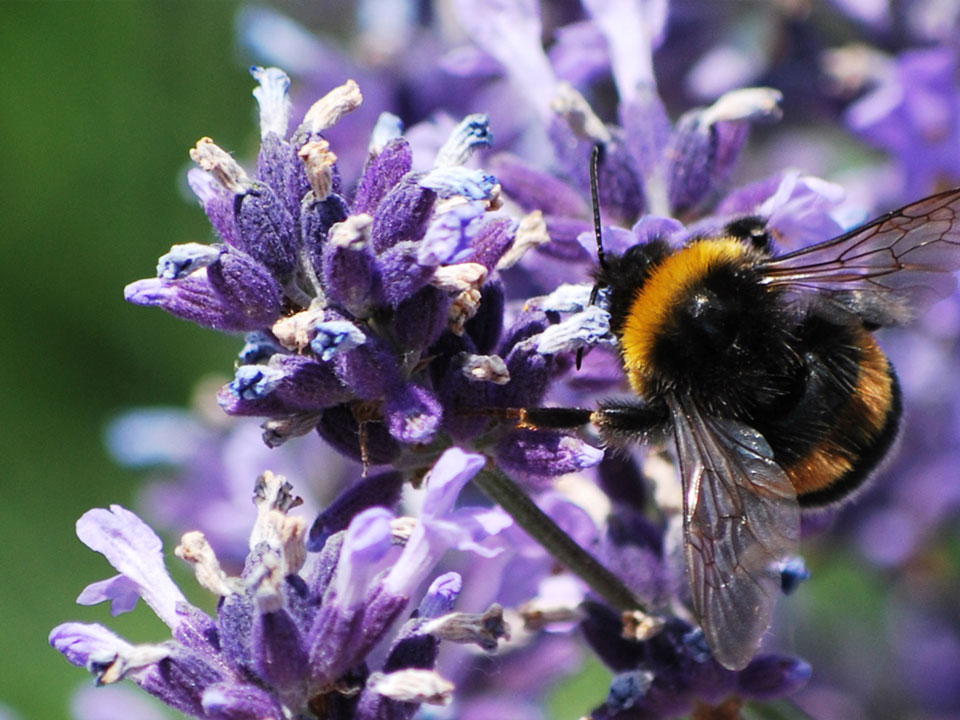Electric Bees

PHOTO: Bumble Bee and Lavender, RedSkullkey
The relationship between bees and flowering plants is a complex example of co-evolutionary adaptation. Each has evolved traits to enable pollination, a process that is as important to plants as it is for pollinating insects. Flowers use bees as vehicles to enhance pollen transport and fertilization, while bees greatly benefit from pollen and nectar as food sources. Bees may carry out fewer total flower visits than other pollinators, but they are responsible for about half of all crop pollination.
Scientists have known for some time that bees rely on senses such as vision, olfaction, humidity sensing, and touch to detect and select appropriate flowers. Recently, another sensory modality has been added to that list. Scientists now know that bees can detect the weak electrostatic field that arises between themselves and a flower via a process known as electroreception.
Electroreception
Electroreception is defined as the ability of an organism to detect external electric forces. It has long been known in animals living in aquatic, electrically conductive environments such as fish, amphibians and platypus. Although electroreception in an aerial environment had previously been hypothesised in bees, only recent studies have provided substantive evidence for the phenomenon.
That evidence points to detection mechanisms for aerial electric forces that are very different from those described in aquatic animals. Bumble bees, Bombus terrestris and honey bees, Apis mellifera have been shown capable of detecting weak electric fields, each in different behavioural contexts, using different sensory mechanisms.
Bumble Bees
Bumble bees can sense the presence of weak electric fields (e-fields) surrounding flowers, and discriminate between e-fields with different radial geometries. The sensory basis for e-field detection in bumble bees appears to rely on mechanosensory hairs which convey information to the bee’s central nervous system.
Check out this quick fun video from California Academy of Sciences, “Electric Bees.”
Honey Bees
Unlike bumblebees, returning honey bee foragers perform a waggle dance, which communicates details of food sources to other bees within the hive using low-frequency oscillating electrical stimuli as they perform the waggle dance. Honey bees are sensitive to these stimuli.
Learn More
If you’d like to explore in-depth how bees find the right flowers, this article posted to the NCBI (National Center for Biotechnology Information) website – while technical – is a great source.
